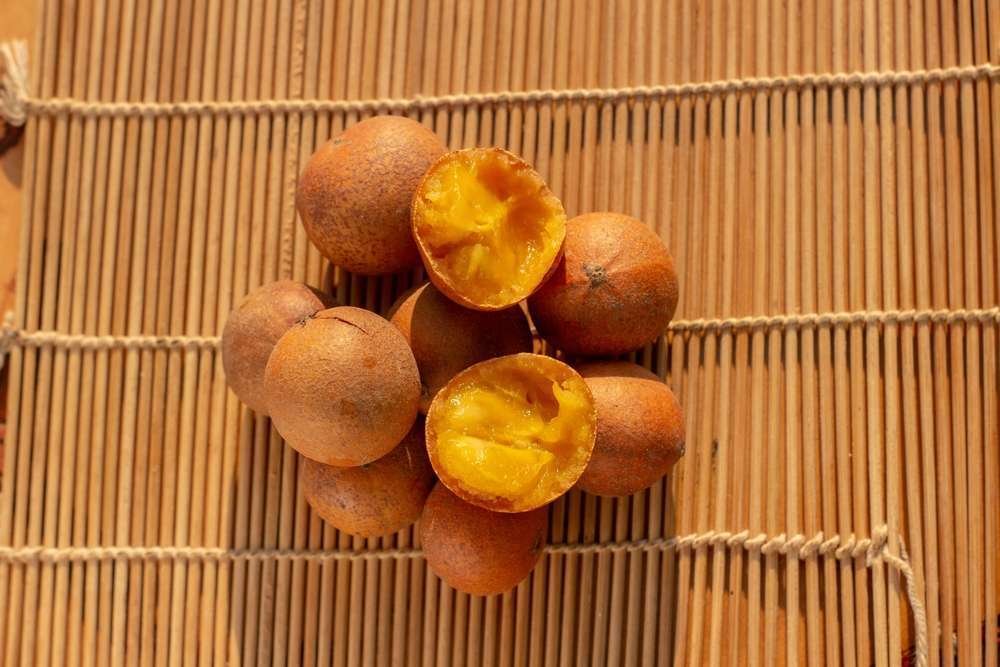Wild Loquat
( Masuku or loquat )
- Uapaca kirkiana
- IUCN Status: Not Evaluated
- Tree Type: Deciduous

- Kingdom: Plantae
- Clade 1: Tracheophytes
- Clade 2: Angiosperms
- Clade 3: Eudicots
- Clade 4: Rosids
- Order: Malpighiales
- Family: Phyllanthaceae
- Genus: Uapaca
Share:
General Information
Uapaca kirkiana, Masuku, the sugar plum or mahobohobo, is a species of dioecious plant in the family Phyllanthaceae. It is native to the southern Afrotropics, where it occurs in well-watered miombo woodlands. Within range it is one of the most popular wild fruits. It is rarely cultivated but trees are left when land is being cleared.
Fun Facts!
Description
The fruit is roughly spherical drupe about 2–4cm in diameter, green in colour ripening to yellow or brown. When ripe, the 1.5mm hard shell encloses the yellow flesh which has an appealing sweet taste that has been likened to pear or plum. Fruits usually contain 3 or 4 seeds, though sometimes 5. Fruits weigh between 5 and 50g each, with from 0.2 to 30g of pulp.
Uses
An infusion made from the roots is used to treat indigestion and dysentery.
The fruit is edible; The wood is used as timber and as firewood and charcoal and the leaves are used as a cockroach repellent in homes. Uapaca kirkiana charcoal is highly regarded. It is also a good source of firewood. The wood is light with white sapwood and reddish-brown, figured heartwood. It is hard and durable, has a straight grain, saws clean and can be planed to a smooth finish. It glues well, holds nails firmly and takes a clear varnish finish. Suitable for general carpentry, house building and domestic utensils, furniture and joinery, carvings and boxes. The wood is also termite resistant. Uapaca kirkiana is used for tannin too. Its roots produce a blue dye. In Malawi and Zambia, the popular brands of Uapaca kirkiana wine, ‘mulunguzi’ and ‘masaku’, are produced commercially. The fruit is a significant source of income in rural areas. The thick, broad leaves are used as wrappers for storage of processed food.
Cultivation
Little work has been done developing cultivars, though some named varieties do exist. Since 1996, work on propagating of superior seedlings has been carried out in Malawi, Tanzania, Zambia, Mozambique and Zimbabwe by the Southern Africa Regional Programme. The plant is are found wild at an altitude of 500 – 2,000 metres in the tropics but grows best where the mean annual temperature is within the range of 18 – 24°c. It prefers a mean annual rainfall of 700 – 1,500mm, but can tolerate 500 – 2,000mm.
Toxicity and Allergies
No donation to this project yet.
| M | T | W | T | F | S | S |
|---|---|---|---|---|---|---|
| 1 | 2 | 3 | 4 | 5 | 6 | 7 |
| 8 | 9 | 10 | 11 | 12 | 13 | 14 |
| 15 | 16 | 17 | 18 | 19 | 20 | 21 |
| 22 | 23 | 24 | 25 | 26 | 27 | 28 |
| 29 | 30 | 31 | ||||

Livingstone weather
Livingstone, ZM
7:09 AM,
27 July, 2024
clear sky
32 %
1018 mb
3 mph
Wind Gust:
3 mph
Clouds:
0%
Visibility:
0 km
Sunrise:
6:44 AM
Sunset:
6:01 PM
Weather from OpenWeatherMap

